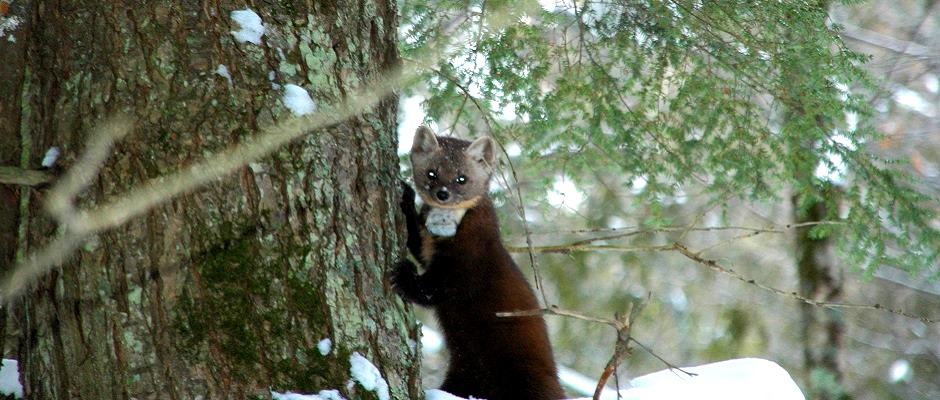Share this article
WSB Study: Scientists quantitatively tell tracks apart in snow
Biologists surveying carnivore populations in snow-covered regions often have a hard time differentiating between the tracks of similar species. By analyzing track characteristics and snow measurements, a recent study focused on fishers (Pekania pennanti) and American martens (Martes americana) in Wisconsin has identified a quantitative way to determine which species and sex left a particular track.
“If you quantify track characteristics, you can differentiate martens from fishers,” said Nicholas McCann, first author on the paper published in the April issue of the Wildlife Society Bulletin. “If you add snow measurements to your analysis, you can parse out the different sexes of the different species.”
McCann and his fellow researchers trapped fishers and martens in the wintertime between 2008 and 2010 in the Chequamegon-Nicolet National Forest in north-central Wisconsin. After putting VHF collars on them, the scientists followed the animals and took measurements of their tracks and the surrounding snow. Then the researchers evaluated the data to figure out which track and snow characteristics were most indicative of the two species and sexes.
Fishers are larger than martens, and males are larger than females in both species, said McCann, a wildlife biologist with Wisconsin’s Great Lakes Indian Fish and Wildlife Commission. However, female fishers and male martens are more similar in size, he said, which makes telling their tracks apart particularly difficult.
Assessing track depth and width and the distance between tracks, McCann’s team was able to identify whether a track belonged to a fisher or marten, a male or female. The analysis became more robust if it incorporated measures of snow depth and compaction and the powdery snow on the icy crust that forms on the ground in winter, which fishers can break through but martens often can’t, he said.
“Quantifying track dimensions and adding in snow depth and compaction measurements would help us know which species and sex we’re looking at,” McCann said.
This new technique could enhance fisher and marten tracking in snowy areas where their ranges overlap, he said, and improve population surveys based on their tracks.
“By having more information about how these tracks differ and methods by which we can more confidently distinguish martens and fishers, we’ll have better information when we’re making decisions about how to manage populations,” McCann said.
This could especially benefit the marten, the only state-endangered mammal, he said, which faces ongoing threats from predation, intensifying logging and waning winters.
Combining track dimensions and snow measurements quantitatively could also help differentiate between other carnivores, such as Canada lynx (Lynx canadensis) and mountain lions (Puma concolor), more easily and accurately, McCann said.
Header Image: An American marten clings to an old tree in Wisconsin’s Chequamegon-Nicolet National Forest. ©Scott Sveiven








